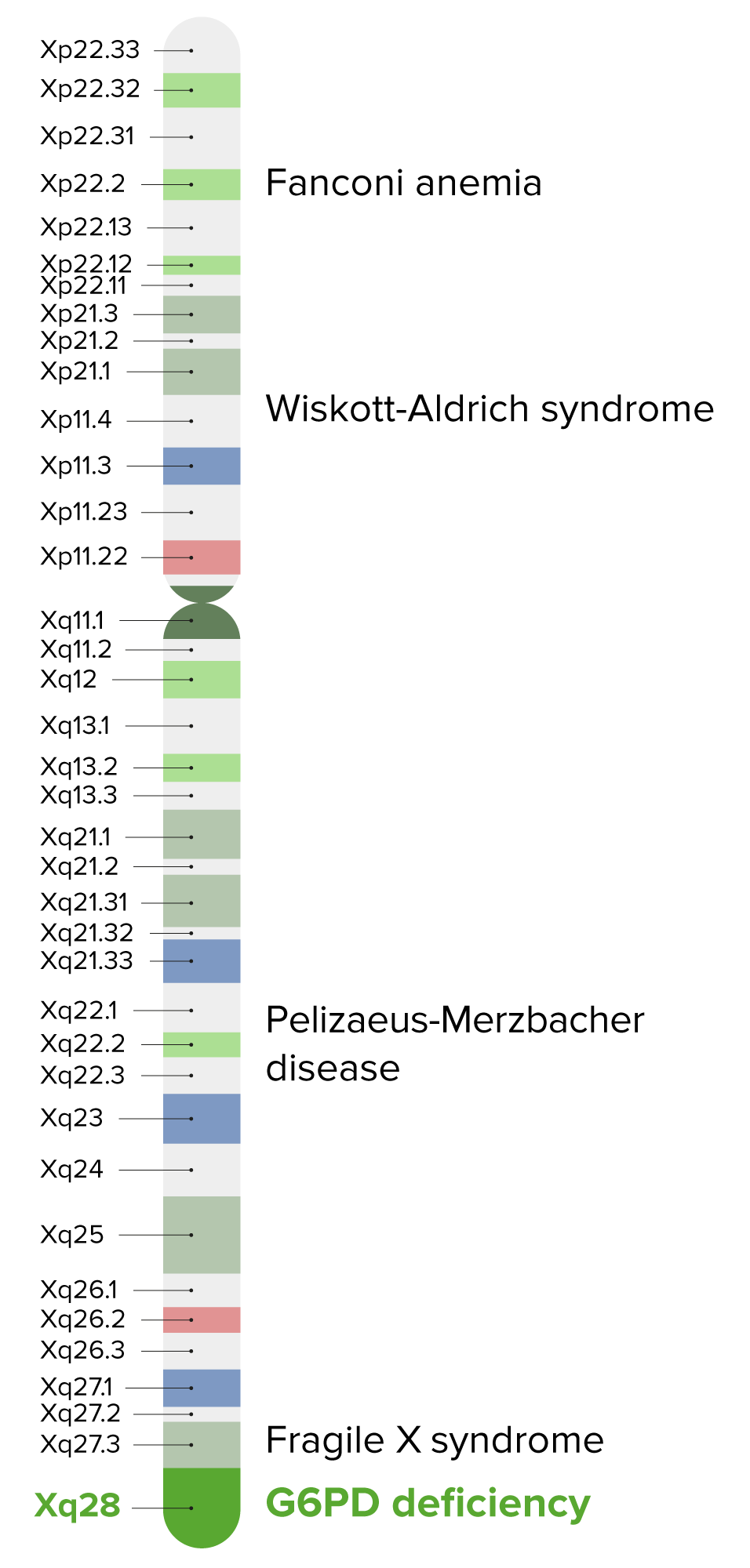Playlist
Show Playlist
Hide Playlist
G6PD Deficiency: Etiology
-
Slides G6PP Deficiency.pdf
-
Reference List Pathology.pdf
-
Download Lecture Overview
00:01 This is G6PD deficiency. 00:03 This is the first enzyme deficiency that we’re going to take a look at under normocytic anemia and we are dealing with, well, hemolytic where you have increased reticulocytosis. 00:15 What is G6PD? It is glucose phosphate dehydrogenase. 00:20 Where do you find this enzyme? Well, you find this, well, think about the glycolytic pathway and I want you to branch off the glycolytic pathway and go into what’s known as a hexose monophosphate shunt or HMP shunt. 00:34 This particular shunt, HMP shunt, is responsible for producing your? NADPH. 00:41 So you take the P in the pentose phosphate pathway and apply it to what kind of NAD—not NADH, but NADPH. 00:52 And why do we in normal physiology require NADPH or biochemistry? It’s the fact that we need NADPH so that we can produce proper amounts of glutathione, right? Glutathione. 01:04 And what does glutathione do for us? It then allows for us to then properly manage and protect ourselves. 01:10 Why is this so important for the RBC? Well, the RBCs require proper months of NADPH and glutathione so it can protect itself against antioxidants, right? Antioxidants. 01:22 Think about a normal mature RBC, central pallor, it is naked. 01:27 It has no nucleus. 01:28 It has no mitochondria. 01:30 The only method by which it can truly protect itself is through this HMP shunt. 01:34 So it is big deal. 01:36 Now, something that I wish to bring to your attention about this very important rate-limiting enzyme of your HMP shunt is the fact that the half-life of a normal enzyme here is 62 days. 01:48 So that’s over two months. 01:50 So what then happens when you have G6PD deficiency? And we’ll talk about this as being an X-linked recessive disease and so therefore a male, such as myself, well, I have no choice, meaning to say that if I was to then inherit the X chromosome, and that’s where the mutation is, then I obviously will have G6PD deficiency. 02:13 What about a female? With a female, maybe one X is the mutated one while the other X is perfectly normal. 02:20 So therefore, she would have a trait, are we clear? Now, if there is such a mutation taking place with X-linked recessive, then what then happens to the enzyme? Take a look at the half-life here. 02:30 The normal 62 drops all the way down to 13. 02:34 That’s not a lot of time for an enzyme to remain active in one's body.
About the Lecture
The lecture G6PD Deficiency: Etiology by Carlo Raj, MD is from the course Hemolytic Anemia – Red Blood Cell Pathology (RBC).
Included Quiz Questions
Glucose-6-phosphate dehydrogenase is a rate-limiting enzyme of which of the following?
- Hexose monophosphate shunt pathway
- Glycolytic pathway
- Oxidative burst
- Lipid synthesis
- Krebs cycle
The mutations in glucose-6-phosphate dehydrogenase (G6PD) deficiency most commonly result in which of the following?
- Decreased stability of G6PD
- Complete depletion of G6PD
- Increased half-life of G6PD
- Reversal of G6PD functions
- Functional impairment of G6PD
Customer reviews
5,0 of 5 stars
| 5 Stars |
|
5 |
| 4 Stars |
|
0 |
| 3 Stars |
|
0 |
| 2 Stars |
|
0 |
| 1 Star |
|
0 |




